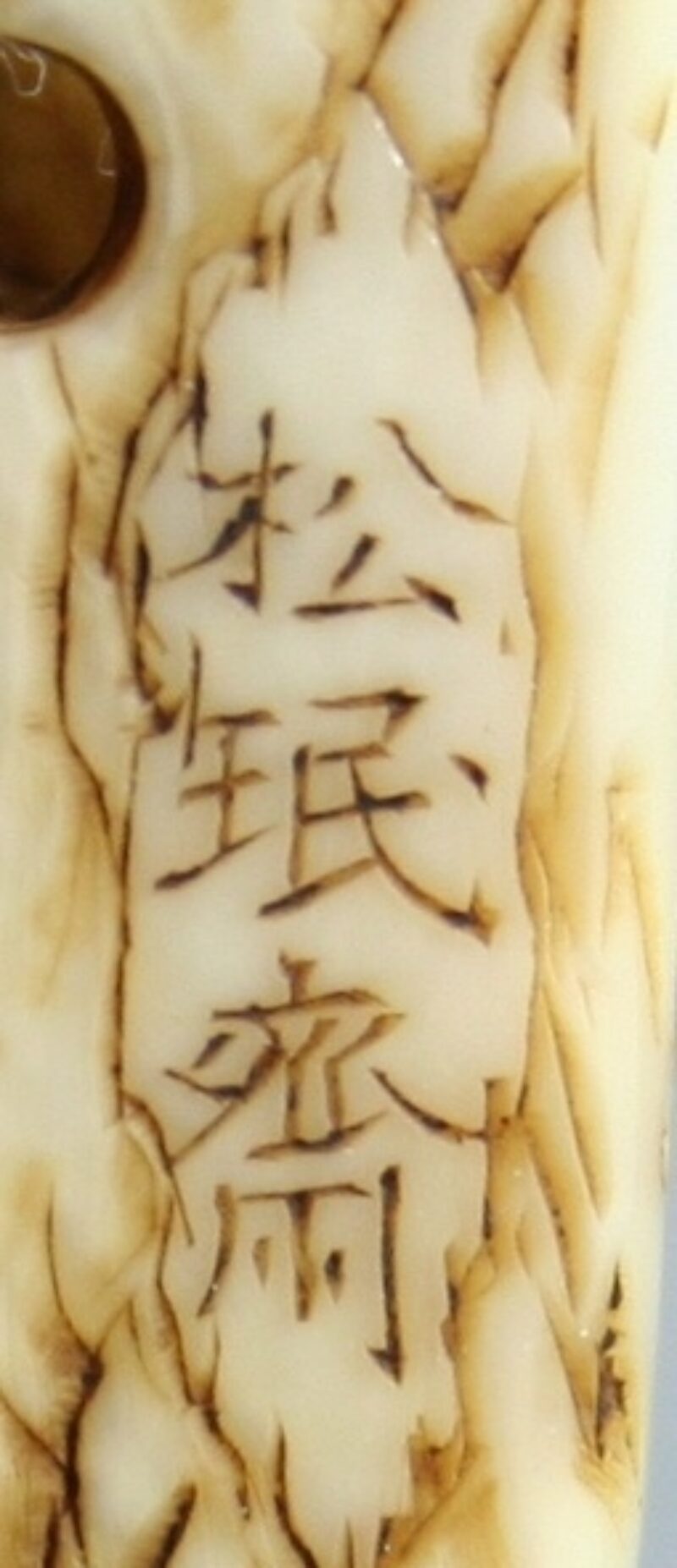- Collection
- Collection database
- Tatar archer on horse
Tatar archer on horse
Information
| Title | Tatar archer on horse |
| Date | c. 1825-1850 |
| Signature | Shōminsai 松みん斎 |
| Height | 3,5 cm |
| Object number | SH2025-LP-115 |
| iterature references | Jirka-Schmitz, Patrizia. 2005. The World of Netsuke: The Werdelmann Collection at the museum kunst palast Düsseldorf. Stuttgart: ARNOLDSCHE Art Publishers. |
| Credit Line | Collection Japan Museum SieboldHuis, donated by Mrs. E.Y. de Koster and Mrs. G. Zellentin, 2025 |
Description
This Tartar archer is recognisable by his iconic fur-trimmed hat. He is depicted with richly decorated equipment; both his coat and saddle have been carved in intricate detail. The horse's gear is adorned with round decorative metal plates. They are shown speeding across a rocky landscape, with the archer holding his bow at the ready.
Tata and Dattajin were the Japanese names for all tribes from the areas north and north-east of China. As early as the fifth century, these groups were known in Japan as Tata. This includes the people which we call ‘Tatars’, as well as other tribes living in these areas. This figure’s clothing is more reminiscent of that worn by the Jurchen people.
For further information on the representation of foreigners in carvings, see our collection story: Hollanders in Japanse snijkunst.
This netsuke has a single cord hole, located at the bottom, in the middle of the base. When in use, the cord was pulled through this hole and then passed between the horse’s legs to form a loop.
The 'min' in Shōminsai seems to have been carved with a character not elsewhere registered. Other carvers under this name signed with 松民斎 or 松眠斎.






